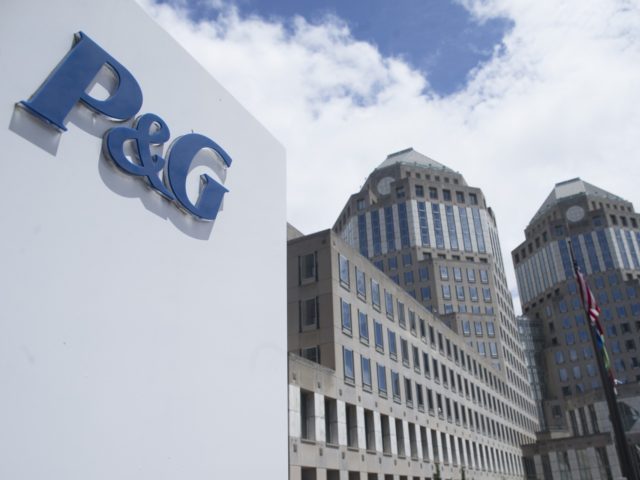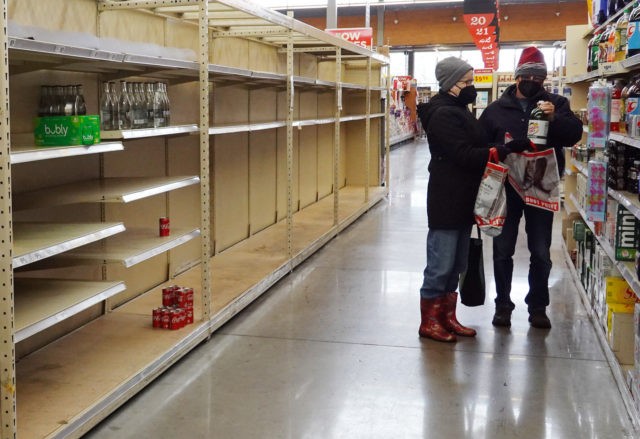Inflation is expected to accelerate through 2022, increasing the cost of everyday products, multinational consumer goods company Unilever said Thursday.
“We expect inflation could be higher next year than this year,” said finance chief Graeme Pitkethly, noting the peak could continue.
Pitkethly said prices rose from the 1.6 percent increase in the second quarter and warned they may increase in the fourth quarter, extending into next year.
The overall inflationary increase is reflected in the rising cost of individual products. For instance, Procter & Gamble is planning to increase prices for oral and skin care products.

In this July 9, 2015, file photo, the Proctor & Gamble headquarters complex is seen in downtown Cincinnati. (AP Photo/John Minchillo, File)
A nationwide supermarket chain, Albertsons, reportedly told analysts on Monday the grocer expects to raise prices on food items due to the supply chain crisis.
United Airlines will also be raising ticket prices. “Airfares are going to come back from the really, really low levels they got to during the pandemic,” CEO Scott Kirby warned on CNBC Thursday.
Big business is not the only type of organizations impacted by the rising inflation. Small business too are having to raise prices. “It’s a mess, and there’s no quick fix,” said Brenton Phillips, co-founder of the Tribal All day Café in Dallas. “Prices have definitely increased, and they seem to still be increasing.”
The price increases are primarily due to a global supply chain crisis that has been exacerbated by President Joe Biden’s policies. Stimulus payments, super-sized unemployment benefits, eviction moratoriums, and student loan forbearance have combined to ramp up incomes and consumer spending while doing little to stimulate supply. The Federal Reserve has maintained an ultra-accommodative monetary policy.

President Joe Biden gives an update on the coronavirus response and vaccination program, in the South Court Auditorium of the White House in Washington, DC, on October 14, 2021. (Nicholas Kamm/AFP via Getty Images)
The impact of the labor shortage is being felt deeply in the trucking industry. President and CEO of the American Trucking Association, Chris Spear, told CNN this week the supply chain crisis is short 80,000 drivers, a “record high.”
The lack of truckers has left ports full of containers needing to be shipped to end destinations, affecting shipping companies. This week, 100 vessels were reportedly anchored for up to two weeks off the coast of California until space on the docks is available to offload containers.
Being unable to unload cargo also delays the ships’ ability to quickly return to Asia to retrieve more cargo. The slowdown in ship efficiency has contributed to the cost increase of shipping containers. Freightos estimated the price of shipping one container has increased from $3,800 to $17,000 in just one year.
But even if ports were not jammed with containers waiting to be moved by truckers, warehouses are full, and prices for the storage spaces are increasing. Full warehouses have resulted in truckers dropping containers in residential neighborhoods near the seaports.

In an aerial view, container ships are anchored by the ports of Long Beach and Los Angeles as they wait to offload on September 20, 2021, near Los Angeles, California. (Mario Tama/Getty Images)
“UCTI Trucking Company, located in Wilmington, California, only has the capacity of holding 65 containers, the report said,” Breitbart News reported. “As a result of limited space, the trucking company has been lining the streets of the nearby neighborhood in front of the homes of nearby residents.”
The supply chain crisis could last into 2024, a food manufacturing organization reportedly warned.
“Six months ago our businesses all thought this was transitory, now every business I know expects this to last into 2023 and 2024. Every single one,” said Ian Wright, CEO of the Food and Drink Federation. The U.K. organization represents and supports food and drink companies in the manufacturing sector.
Follow Wendell Husebø on Twitter @WendellHusebø

COMMENTS
Please let us know if you're having issues with commenting.